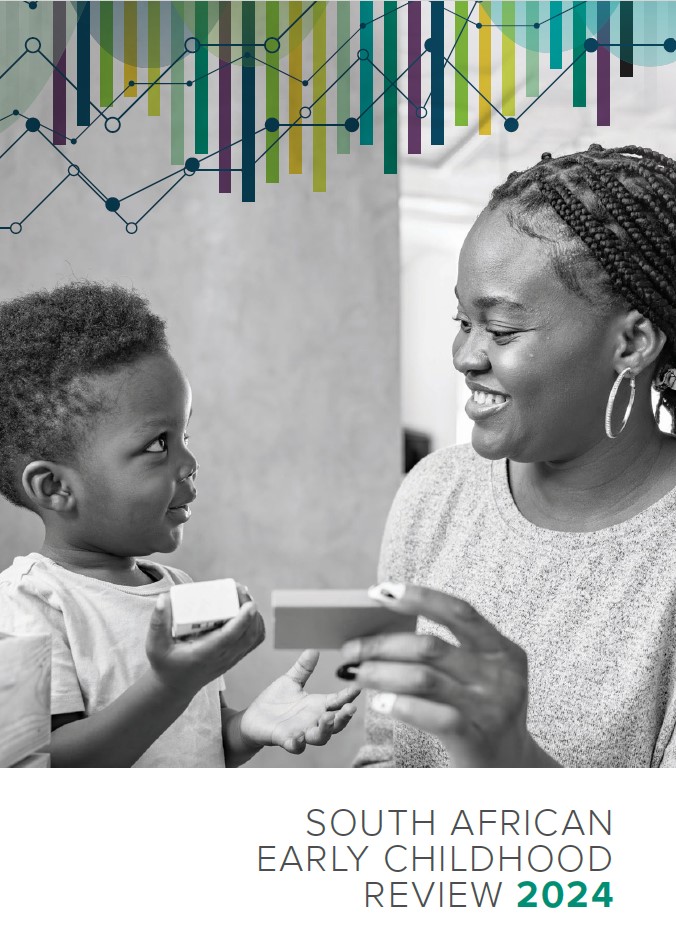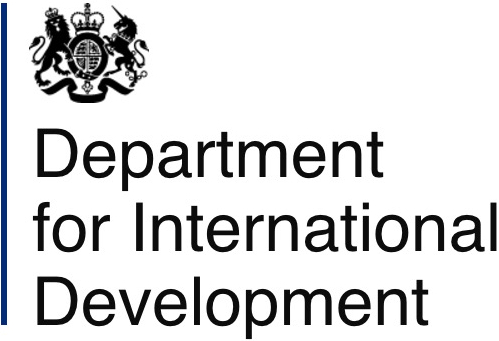This indicator shows the number and percentage of children who travel long distances to reach school. Distance is measured through a proxy indicator: length of time travelled to reach the school attended, which is not necessarily the school nearest to the child’s household. The school the child attends is defined as “far” if a child has to travel more than 30 minutes to reach it, irrespective of mode of transport. Children aged 7 – 13 are defined as primary school age, and children aged 14 – 17 are defined as secondary school age.
Analysis by Katharine Hall & Sumaiyah Hendricks, Children's Institute, University of Cape Town.
- Children are defined as persons aged 0 – 17 years. The proportions are based on children in the age group appropriate for school level: Primary 7 – 13 years; Secondary 14 – 17 years.
- Population numbers have been rounded off to the nearest thousand.
- Sample surveys are always subject to error, and the proportions simply reflect the mid-point of a possible range. The confidence intervals (CIs) indicate the reliability of the estimate at the 95% level. The wider the CI, the more uncertain the proportion. Where CIs overlap for different sub-populations or time periods we cannot be sure that there is a real difference in the proportion, even if the mid-point proportions differ. CIs are represented in the bar graph by vertical lines at the top of each bar.
For children who do not have schools near to their homes, the cost, risk and effort of getting to school can influence decisions about regular attendance, as well as participation in extramural activities and after-school events. Those who travel long distances to reach school may wake very early and risk arriving late or physically exhausted, which may affect their ability to learn. Walking long distances to school may also lead to learners being excluded from class or make it difficult to attend school regularly.
Questions about distance and means of travel to school were not asked in the 2020 or 2021 GHS as the number of questions was reduced during lockdown. Of the 12.5 million children who were attending school in 2022, over 8 million (65%) walked to school, while 12% travelled in vehicles hired by a group of parents, 9% travelled in private cars and 7% used public transport (bus, minibus, taxi or train). Only 4% used school transport. The vast majority of White learners (78%) were driven to school in private or hired cars, compared with only 18% of African children. And while 69% of African children walk to school, only 7% of White children do so. These figures illustrate pronounced disparity in child mobility and means of access to school.
Assuming that schools primarily serve the children living in communities around them, the ideal indicator to measure physical access to school would be the distance from the child's household to the nearest school. This analysis is no longer possible due to question changes in the GHS. Instead, the indicator shows the number and percentage of children who travel far (more than 30 minutes) to reach the actual school that they attend, even if it is not the closest school.
Overall, the vast majority (86%) of the 12.5 million children who attended school in 2022 travelled less than 30 minutes to reach school. Children of secondary school age are more likely than primary school learners to travel far to reach school. In 2022 there were 8.3 million children of primary school age (7 – 13 years) in South Africa. A million of these children (12%) travel more than 30 minutes to and from school every day. In KwaZulu-Natal, this percentage is significantly higher than the national average, at 21%. Of the 4.5 million children of secondary school age (14 – 17 years), 19% travel more than 30 minutes to reach school, and again it is children in KwaZulu-Natal who are most likely to travel far (26%). The majority of these children live in rural areas: 19% of secondary school age children in the former homelands and 25% living on farms travel far to school, compared to 11% of children living in urban areas.
Physical access to school remains a problem for many children in South Africa, particularly those living in more remote areas where public transport to schools is lacking or inadequate and where households are unable to afford private transport for children to get to school. There were 24,871 schools in South Africa in 2022, of which 22,589 were public and 2,282 independent.1 Nearly 4,000 government schools have closed since 2002 as the DBE consolidates smaller schools and closes state-funded farm schools. While the concentration of more children into fewer schools may be an advantage from a school management perspective, it may mean that children in remote areas have more difficulty in accessing school. Over the same period, the number of independent schools in the country has almost doubled, from 1,158 to 2,282.2
1 Department of Basic Education. School Realities 2022. Pretoria: DBE. 2023.
2 Department of Basic Education. Education Statistics series, and School Realities series. Pretoria: DBE. 2004-2022.
For purposes of this indicator, where respondents indicate that children aged 7-17 who attend school have to travel more than 30 minutes to school, the distance to school is categorised as ‘far’. Where children spend 30 minutes or less travelling to school, the distance is categorised as “not far”. The indicator does not take into account those who are not attending school because schools are inaccessible - this is because the question is only asked in respect of household members who are reported to be attending an educational institution.
The GHS uses a Master Sample frame which has been developed as a general-purpose household survey frame that can be used by all other Stats SA household-based surveys that have design requirements that are reasonably compatible with the GHS. The sample is drawn from Census enumeration areas using a stratified two-stage design with probability proportional to size sampling of PSUs in teh first stage, and sampling of dwelling units with systematic sampling in the second stage. The resulting sample consists of just over 20,000 households with around 70,000 individuals, and should be representative of all households in South Africa. It is also designed to be representative at provincial level and within provinces at metro/non-metro levels and three geography types (urban areas, rural areas under traditional authority, and farms).
The sample consists of households and does not cover other collective institutionalised living-quarters such as boarding schools, orphanages, students’ hostels, old-age homes, hospitals, prisons, military barracks and workers’ hostels. These exclusions probably do not have a noticeable impact on the findings in respect of children.
Changes in sample frame and stratification
Since 2014 the GHS has been based on the 2013 master sample that that is, in turn, based on information collected during the 2011 Population Census. The previous master sample for the GHS was used for the first time in 2008, and the one before that in 2004. These again differed from the master sample used in the first two years of the GHS: 2002 and 2003. Thus there have been four different sampling frames during history of the annual GHS, with the changes occurring in 2004, 2008 and 2013. In addition, there have been changes in the method of stratification over the years. These changes could compromise comparability across iterations of the survey to some extent, although it is common practice to use the GHS for longitudinal monitoring and many of the official trend analyses are drawn from this survey.
Weights
Person and household weights are provided by Stats SA and are applied in Children Count analyses to give population estimates on the indicators. The GHS weights are derived from Stats SA’s mid-year population estimates for the relevant year. The population estimates are based on a model that is revised from time to time when it is possible to calibrate the population model to Census data and larger population surveys such as the Community Survey.
In 2017, Stats SA revised its demographic model to produce a new series of mid-year population estimates and the GHS data were re-released with the revised population weights. All the Children Count indicators were re-analysed retrospectively, using the revised weights provided by Stats SA, based on the 2013 model. The estimates are therefore comparable over all years. The revised weights particularly affected estimates for the years 2002 – 2007.
The 2017 model drew on the 2011 census, along with vital registration, antenatal and other administrative data, but was a “smoothed” model that did not mimic the unusual shape of the age distribution found in the census. The results of the 2011 census were initially distrusted because it seemed to over-count children in the 0 – 4 age group and under-count children in the 4 – 14-year group. It is now thought that the fertility rates recorded in the 2011 population census may have been an accurate reflection of demopraphic trends, with an unexplained upswing in fertility around 2009 after which fertility rates declined again gradually. Similar patterns were found in the vital registration data as more births were reported retrospectively to the Department of Home Affairs, and in administrative data from schools, compiled by the Department of Basic Education. In effect, this means that there may be more children in South Africa than appear from the analyses presented in these analyses, where we have applied weights based on a model that it is now known to be inaccurate.
Stats SA has subsequently developed a new population model - the 2022 series, which provides revised mid-year population estimates back to 2002 and projected to 2032. However, the GHS series has not yet been reweighted.The population estimates in Children Count are therefore based on weights derived from outdated population model (2017). It is not yet clear when and how the population model will be revised again following the 2022 Census, as there are concerns around census under-count and plausibility of its findings.
Disaggregation
Statistics South Africa suggests caution when attempting to interpret data generated at low level disaggregation. The population estimates are benchmarked at the national level in terms of age, sex and population group while at provincial level, benchmarking is by population group only. This could mean that estimates derived from any further disaggregation of the provincial data below the population group may not be robust enough.
Reporting error
Error may be present due to the methodology used, i.e. the questionnaire is administered to only one respondent in the household who is expected to provide information about all other members of the household. Not all respondents will have accurate information about all children in the household. In instances where the respondent did not or could not provide an answer, this was recorded as “unspecified” (no response) or “don’t know” (the respondent stated that they didn’t know the answer).
For more information on the methods of the General Household Survey, see the metadata for the respective survey years, available on Nesstar or DataFirst

 The SAECR 2024 tracks trends on the status of children under 6.
The SAECR 2024 tracks trends on the status of children under 6. 











